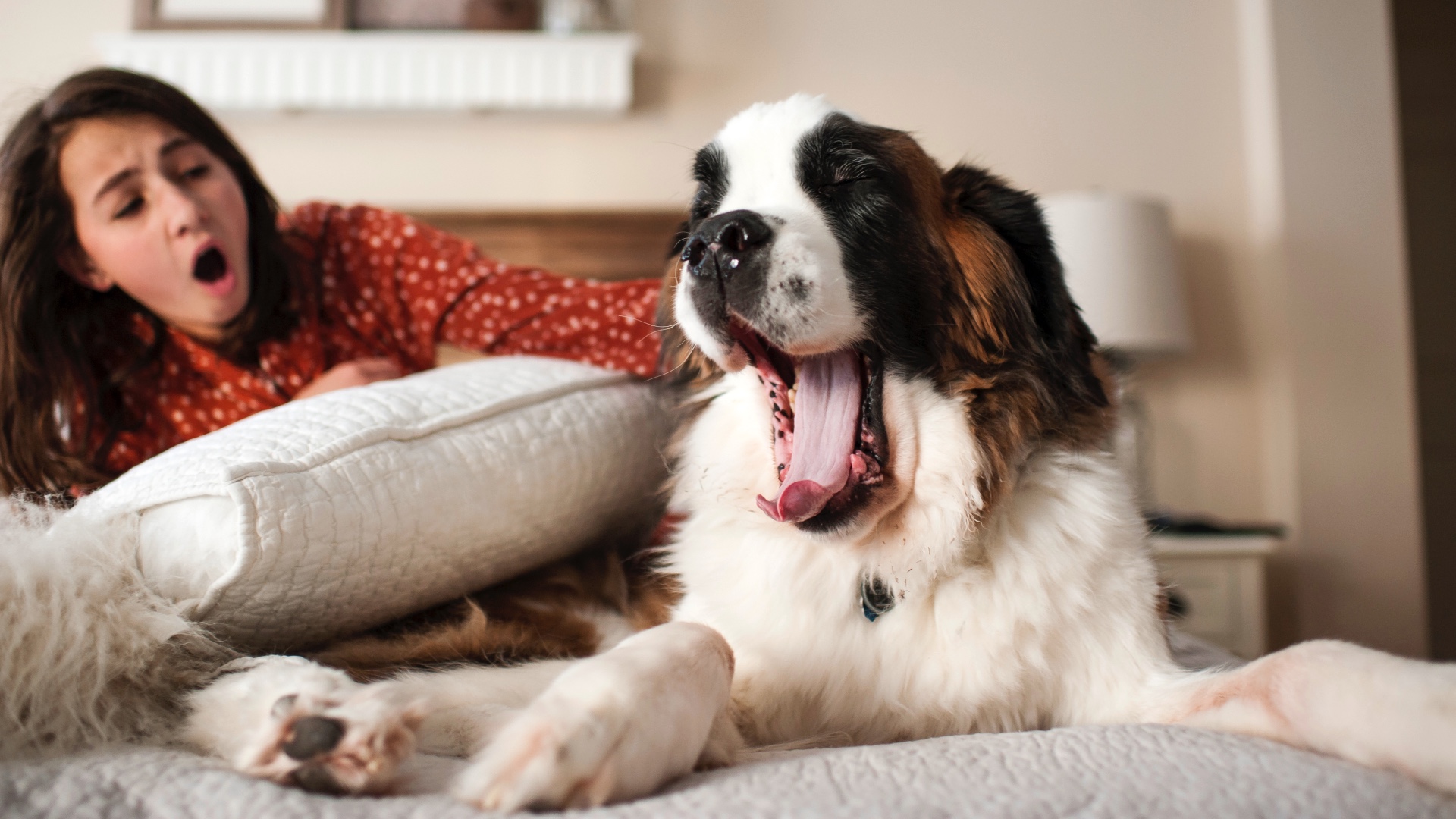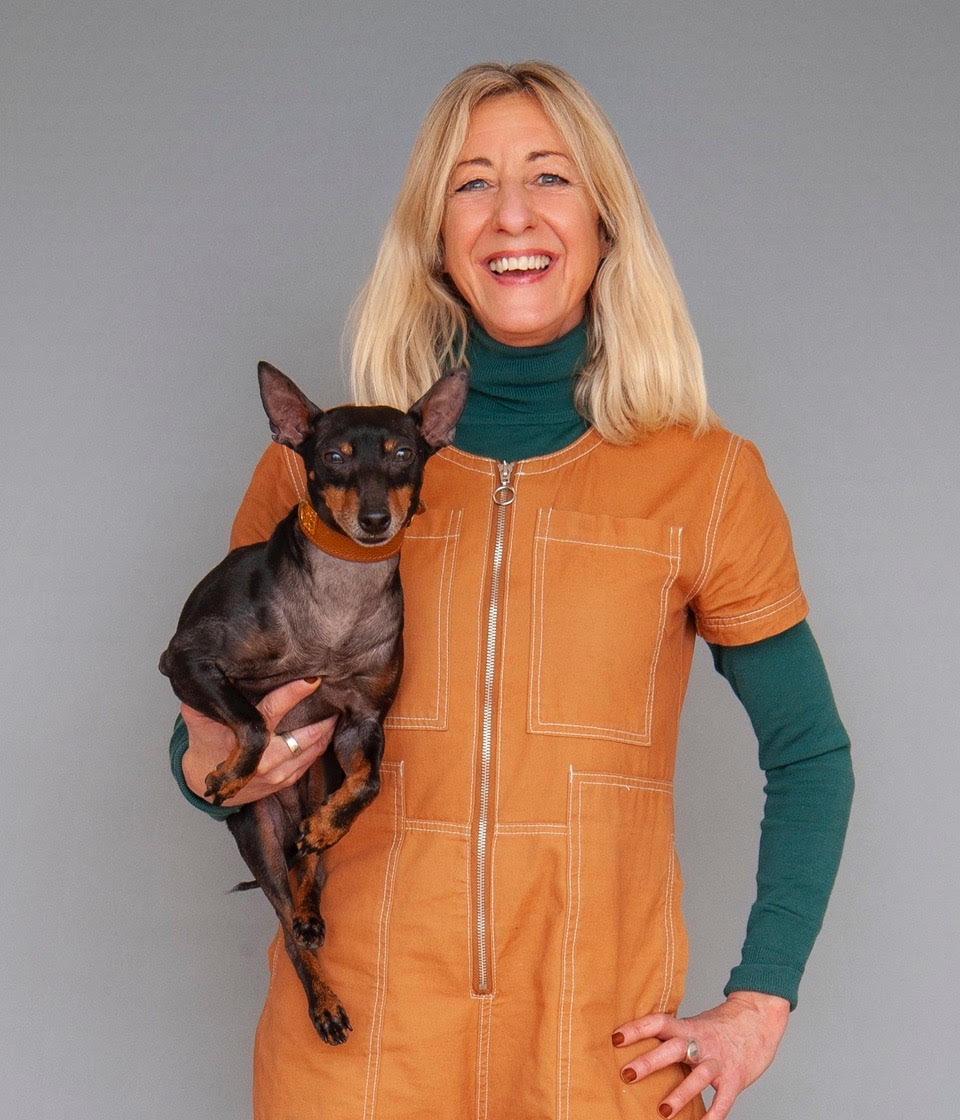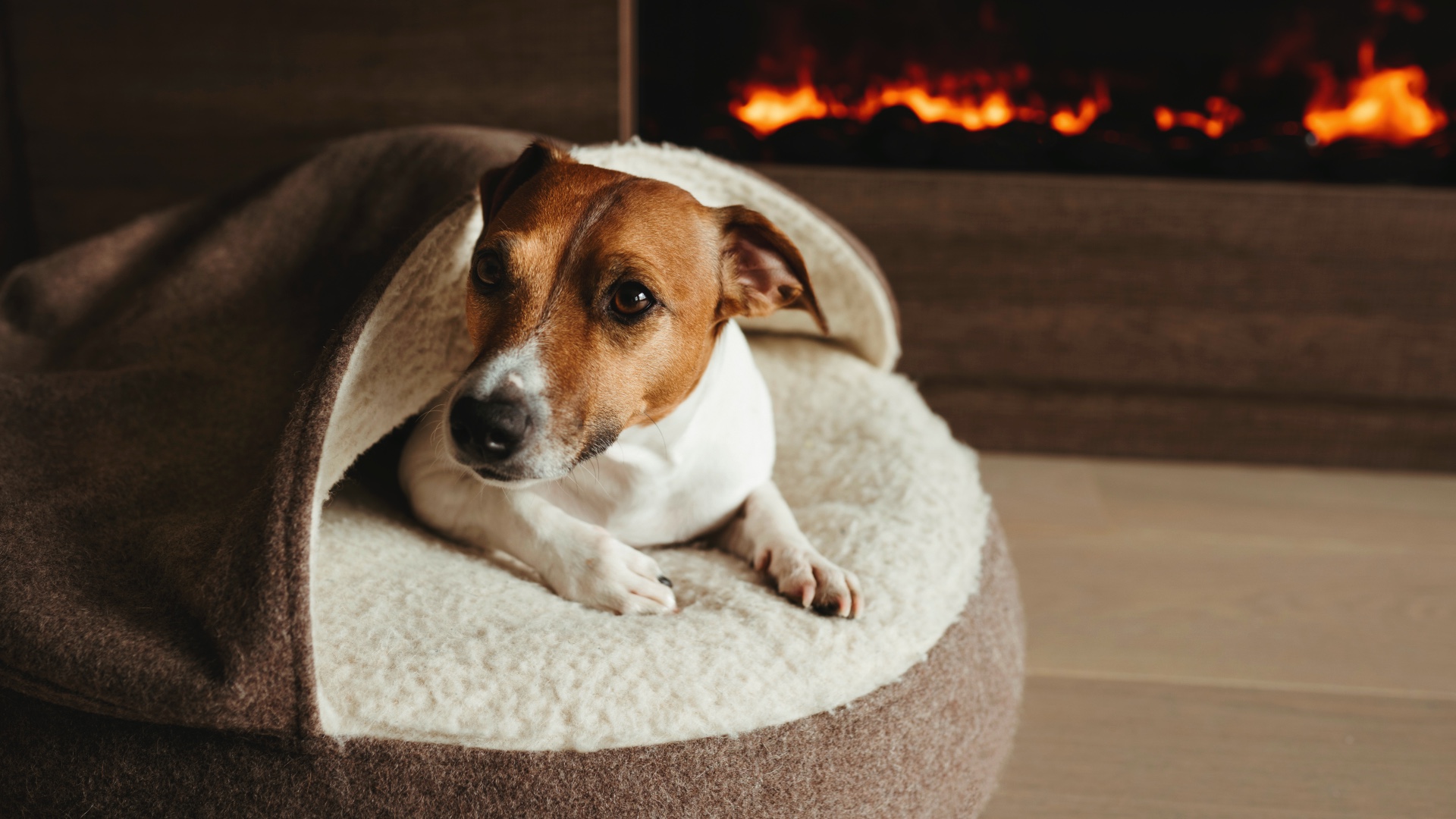How to get a dog to sleep in a different room
Discover how to get a dog to sleep in a different room with these handy expert-approved tips.

If you kip in the same room as your beloved fur friend but struggle to sleep because of allergies (or their sleeping habits), it could be time for you to learn how to get a dog to sleep in a different room.
Any pet parent will agree: our four-legged friends are the light of our lives. They’re always there at the end of a long day to bring a smile to your face and one cuddle has the power to boost your mood tenfold. However, when it comes to catching a good night’s sleep, having your furkid snoozing (and perhaps sweetly snoring) away beside you can prove to be disruptive — especially if you have a dog that twitches in their sleep or you have a sleep-barking dog.
Despite what your dog might think, sleeping in separate rooms comes with a plethora of benefits. Along with helping you get the quality of sleep you need to function during the day, sleeping separately helps your dog get used to you not being there 24/7. Plus, it minimizes the risk that they’ll bring parasites into the bedroom — although that’s where the best flea treatments for dogs come into their own. Sleeping in separate beds may also help your dog to sleep later in the morning.
It’s fair to say that learning how to get a dog to sleep in a different room will need a handful of patience and perseverance. But once you’ve mastered it, you and your energy levels will feel all the better for doing so. To help you and your furry friend get a better quality of sleep, here are some top tips to try out.
1. Don’t give them mixed messages
‘Should your dog sleep in your bed?’ is a common canine conundrum. If you’re yet to bring your pooch home, pet expert Anna Webb recommends starting how you mean to go on. “Begin from the get-go training your dog to sleep in a separate room if this is what you want.” Meaning? “No mixed messages with the odd sleep in your bed,” Webb adds.
If you’re lost as to where to start, just like humans, dogs love to have a comfy place to lay their heads. Which is where the best dog beds step up to the plate. Or if you’ve got a large hound on your hands, the best large dog beds may be better suited. Place their bed in a comfy spot with no drafts. To help lull them to sleep, Webb says: “Put a radio in the room, so the dog has sonic enrichment and deflects from any outdoor sounds.”

Broadcaster and nutrition & behaviour expert Anna, has a Psychology degree alongside qualifications from the College of Integrated Veterinary Studies. She is a long-time member of the International Association of Animal Therapists and is a bronze affiliate of the Raw Feeding Veterinary Society. As a pet expert, Anna hosts her podcast, A Dog’s Life with Anna Webb, which delves deep into all aspects of modern dog ownership. She also contributes regularly across national radio including TalkTV, Radio 2, Radio 4 and LBC. When she’s not talking about dogs, she’s writing about them as a columnist for several publications, including: Edition Dog, Your Dog, Animal Therapies Magazine and Vanity Fur. Anna shares her home with her Miniature Bull Terrier, Prudence, Mr Binks, her re-homed English Toy Terrier, and her rescued ‘street cat’, Baggy who thinks he’s a dog.
2. Tire them out
If you’ve already been sleeping in the same room as your dog, the first step is to wear that precious pooch of yours out! Sleepiness is your friend when it comes to getting your dog to settle into a new sleep spot, as most dogs will sleep just about anywhere if they’re tired enough.
Get the best advice, tips and top tech for your beloved Pets
If you have one of the 10 best dogs for runners or walkers, and you enjoy pounding the pavement, take your dog out for a good vigorous workout a few hours before you want them to go to bed.
You won’t have to do this forever, but tiring them out each day in the first week or so of introducing them to their new sleeping area will help a lot. And if that fails? “Give your dog an interactive toy like a kong to help distract and tire them out before lights out,” Webb adds. For more tips on how to use a kong, see our vet-backed guide.
3. Create a sleep sanctuary
One of the best ways to get your pup to sleep in a new place is to make it so enticing that it’s going to be impossible for them to resist.
As we mentioned earlier, if you’ve not already done so, consider getting a good quality bed for your dog. If your furkid is on the anxious side, choose one with higher sides that will help them feel safe and secure. Add in a cozy blanket, a pillow, and some toys, and voila – you’ve just created the perfect haven for your hound.
For dogs that aren’t used to being on their own, you may want to invest in one of the best dog crates, and place their bed, blanket, and toys in there to begin with until they feel comfortable being alone.
“Dogs like to have a ‘den’”, Webb tells us. “Modern crates work really well to give a dog a ’safe’ den.”
4. Lead your dog, don’t force them

Do you remember those days as a kid when you were forced to eat those vegetables you hated in order to get dessert? Not fun. None of us like to be forced to do something we don’t want to do, and it’s no different for our pets.
Just like being force-fed Brussel sprouts probably turned you off for life, being forced to sleep in a particular place can have the same effect on your dog. When it comes to a new snooze spot, the honey approach works better than the vinegar one.
Grab a bag of the best dog treats, and use these to help encourage your dog to sleep where you want them to. Lead them there with the treats and lots of verbal praise, and spend some time hanging out with them in their new sleep space, making it a fun and safe place to be. “When your dog is in the bed, give a treat and introduce the cue ‘on your bed’,” Webb recommends. “Call your dog off the bed to you and praise the recall. Repeat, ‘on your bed’ and encourage with treats. The trick is the dog must not come out of the bed until you ask him to,” Webb says. Very gradually, encourage your pet to stay on its bed as you walk backward, leaving the room with your sleepy fur friend remaining on the bed.
5. A routine is your best friend
No matter how old your hound is, they’re similar to children in that they thrive on routine — and pet expert Webb agrees. “They love structure in their day (and that’s also really good for their humans too). Dogs like their day punctuated with walks, comfort breaks, and playtime. After these three things have been achieved, it's more likely they will settle in their bed,” Webb adds.
So, each evening, try to be consistent with the time you exercise them, feed them, and put them to bed – that way, your dog will know exactly what to expect.
Once you’re at the bedtime stage of your evening routine, there are a few helpful things you can do to encourage your dog to want to doze off. Place a treat in their bed each night – this gives them something to look forward to, and entices them to head in the direction of their sleep spot. But, as Webb explains, you could also promote settling with appropriate chews, and interactive toys and by placing the radio on for ‘sound enrichment’. While freshwater should always be available for your dog to drink.
After they’ve got into bed and are happily munching on their treat, spend a few minutes stroking your pup and gently making a fuss so that they feel safe and comfortable. Once you’re at that stage, say goodnight, and leave them.
As with everything, consistency is key. Repeat the same routine each night, and very soon your dog will know what’s expected of them.
Struggling to ramp up the fun factor during the day? Check out all the best ways to build some more fun into your dog’s routine.
6. Mix lots of praise…
We know we’ve already said this, but it’s worth stressing: when it comes to getting your pup to sleep in a different room, there’s no such thing as too much praise.
Be liberal when it comes to telling your furkid that they’re a good boy or girl, and back the words up with plenty of affection and a few treats here and there.
7. ...with lots of patience
Speaking of things you can’t have too much of, patience is another biggie! Just like with children, our canine companions will often push the boundaries to see how far they can go, and it may take them some time to learn the ropes.
Preparing yourself for that can save you a lot of frustration, so when you feel yourself wanting to tear your hair out because your furkid won’t sleep where you want them to, take a few deep breaths, and remember: patience, perseverance, and consistency is the recipe for success.

Kathryn is a freelance writer who has been a member of the PetsRadar family since it launched in 2020. Highly experienced in her field, she's driven by a desire to provide pet parents with accurate, timely, and informative content that enables them to provide their fur friends with everything they need to thrive.
Kathryn works closely with vets and trainers to ensure all articles offer the most up-to-date information across a range of pet-related fields, from insights into health and behavior issues to tips on products and training.
When she’s not busy crafting the perfect sentence for her features, buying guides and news pieces, she can be found hanging out with her family (which includes one super sassy cat and a kitten), drinking copious amounts of Jasmine tea and reading all the books.
She has written for a range of publications, including Fit&Well, Top Ten Reviews, LiveScience, Goodto, and Product Hunt.
- Becks ShepherdFreelance Journalist
